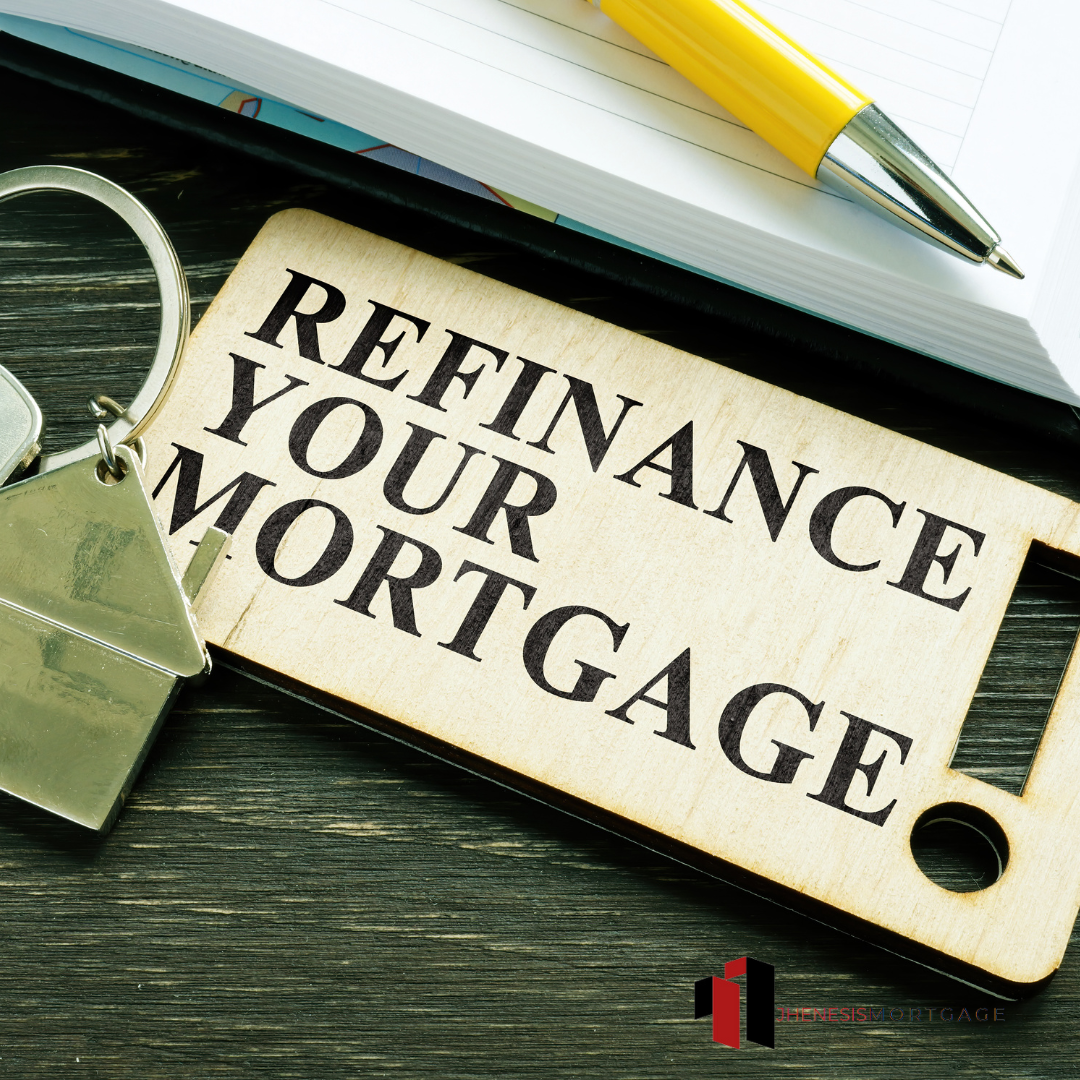Navigating the Refinance Waters: Your Mortgage Refinancing Guide
As we approach 2025, the landscape of mortgage financing continues to evolve, presenting both opportunities and challenges for homeowners. Economic shifts, potential interest rate fluctuations, and changes in housing market dynamics can significantly impact the financial decisions you make regarding your most significant asset: your home. For many, mortgage refinancing emerges as a powerful tool to optimize their financial position, whether by reducing monthly payments, shortening loan terms, or tapping into accumulated home equity.
This comprehensive guide is designed to equip you with the knowledge and insights necessary to navigate the 2025 mortgage refinancing waters with confidence. We’ll delve into the fundamental aspects of refinancing, explore its myriad benefits and potential drawbacks, dissect the various types of refinance options available, and walk you through the entire process step-by-step. Furthermore, we’ll highlight key considerations specific to the 2025 economic climate, ensuring you are well-prepared to make an informed decision that aligns with your long-term financial goals. By the end of this article, you will have a clear understanding of whether refinancing your mortgage in 2025 is the right move for you, and how to successfully achieve it.
Understanding Mortgage Refinancing: The Basics
Mortgage refinancing, at its core, involves replacing your existing home loan with a new one. While the concept might seem straightforward, the implications for your financial health can be profound. It’s not merely about securing a lower interest rate; it’s a strategic financial maneuver that can reshape your budget, accelerate wealth building, or provide much-needed liquidity.

What Exactly is Refinancing?
When you refinance your mortgage, you are essentially taking out a brand new loan to pay off your old one. This new loan comes with a new set of terms, including a different interest rate, a new loan term (e.g., 15 years, 30 years), and potentially a different loan amount. The underlying property remains the collateral for the new loan, just as it was for the original mortgage.
The primary motivations behind refinancing typically fall into a few key categories:
-
-
- Securing a lower interest rate: This is often the most common reason, leading to reduced monthly payments and significant savings over the life of the loan.
- Changing the loan term: Homeowners might opt for a shorter term to pay off their mortgage faster, or a longer term to reduce monthly payments.
- Tapping into home equity: A “cash-out” refinance allows you to borrow against the equity you’ve built in your home, providing funds for various purposes.
- Switching loan types: Moving from an adjustable-rate mortgage (ARM) to a fixed-rate mortgage for stability, or from an FHA loan to a conventional loan to eliminate mortgage insurance.
-
Refinancing is a significant financial decision that requires careful evaluation of your current financial situation and future goals.

Why Consider Refinancing in 2025?
The decision to refinance is always personal, but the broader economic environment plays a crucial role. As we look towards 2025, several factors could make it an opportune time for many homeowners:
-
-
- Potential Interest Rate Shifts: While predicting future interest rates with absolute certainty is impossible, economists often provide forecasts based on Federal Reserve policies, inflation trends, and global economic stability. If rates are projected to decline or stabilize at favorable levels, refinancing could lock in long-term savings. Conversely, if you secured a high rate during a period of volatility, a more stable 2025 could offer better options.
- Home Equity Growth: Many housing markets have seen substantial appreciation in recent years. This growth in home equity provides more opportunities for homeowners to leverage their property for cash-out refinances, or to remove private mortgage insurance (PMI) if their loan-to-value (LTV) ratio improves.
- Inflation Considerations: Persistent inflation can erode purchasing power. Refinancing to a lower fixed rate can help stabilize a significant portion of your monthly expenses, providing predictability in an uncertain economic climate.
- Personal Financial Evolution: Your financial situation in 2025 might be vastly different from when you first purchased your home. Increased income, reduced debt, or new financial goals (e.g., college tuition, retirement planning) can all make refinancing a smart strategic move.
-
By understanding these foundational elements, you can begin to assess whether 2025 presents the right window for your mortgage refinancing strategy.

The Benefits of Refinancing Your Mortgage
Refinancing offers a compelling array of benefits that can significantly improve your financial standing and help you achieve various personal goals. It’s more than just a transaction; it’s a strategic financial adjustment.

Lowering Your Interest Rate and Monthly Payments
This is arguably the most common and attractive reason to refinance. Even a small reduction in your interest rate can translate into substantial savings over the life of your loan and a more manageable monthly payment.
Example:
Imagine you have a $300,000 mortgage at 6.5% interest over 30 years. Your principal and interest payment would be approximately $1,896. If you refinance to a 5.5% interest rate, your new payment would drop to around $1,703, saving you $193 per month. Over 30 years, this amounts to over $69,000 in savings. Such savings can be redirected towards other financial goals, such as retirement, education, or even paying down the mortgage faster.
Changing Your Loan Term
Refinancing allows you to adjust the duration of your mortgage, offering flexibility to align with your financial objectives.
- Shorter Term (e.g., 30-year to 15-year): This option enables you to pay off your mortgage much faster, often at a lower interest rate, leading to significant savings on total interest paid. While monthly payments will likely increase, the long-term financial gain can be substantial. For instance, a 15-year mortgage typically carries a lower interest rate than a 30-year one, accelerating your path to debt-free homeownership.
- Longer Term (e.g., 15-year to 30-year): If you’re facing financial strain or simply want to free up cash flow, extending your loan term can significantly reduce your monthly payments. While you’ll pay more in total interest over the longer period, the immediate relief to your budget can be invaluable. This can be particularly useful if you’re planning for other large expenses or want to build up an emergency fund.
Tapping into Your Home Equity (Cash-Out Refinance)
A cash-out refinance allows you to convert a portion of your home equity into liquid cash. You take out a new mortgage for a larger amount than what you currently owe, and the difference is paid to you in cash at closing. This can be a powerful tool for various financial needs:
- Debt Consolidation: Consolidating high-interest debts, such as credit card balances or personal loans, into your lower-interest mortgage can save you thousands in interest payments and simplify your financial management.
- Home Improvements: Fund renovations or additions that can increase your property value and enhance your living space.
- Education Expenses: Pay for college tuition or other educational costs.
- Investment Opportunities: Fund other investments, though this should be approached with caution and professional advice.
It’s crucial to remember that a cash-out refinance increases your mortgage debt and extends the repayment period for the borrowed equity.
Switching Loan Types
Your financial needs and market conditions may change, making a different loan type more suitable.
- Adjustable-Rate Mortgage (ARM) to Fixed-Rate: If you currently have an ARM and interest rates are trending upwards, or you simply prefer predictable payments, switching to a fixed-rate mortgage offers stability and peace of mind for the entire loan term.
- FHA/VA to Conventional: Homeowners with FHA loans pay mortgage insurance premiums (MIP) for the life of the loan or a significant portion of it. If you’ve built sufficient equity (typically 20% or more), refinancing to a conventional loan can eliminate these premiums, saving you money monthly. Similarly, some VA loan holders might choose to refinance to a conventional loan to remove the VA funding fee or for other specific reasons.
Removing Mortgage Insurance (PMI/MIP)
If you made a down payment of less than 20% when you purchased your home, you likely pay private mortgage insurance (PMI) on a conventional loan or mortgage insurance premium (MIP) on an FHA loan. PMI protects the lender in case you default. Once your loan-to-value (LTV) ratio reaches 80% (meaning you owe 80% or less of your home’s value), you can typically request to have PMI removed.
Refinancing can be a way to achieve this sooner if your home’s value has increased significantly, or if you’ve paid down a substantial amount of your principal. By refinancing into a new loan where your LTV is below 80%, you can eliminate this monthly expense, leading to immediate savings.
The ability to eliminate mortgage insurance can significantly reduce your overall housing costs and improve your monthly cash flow.
Potential Risks and Drawbacks of Refinancing
While refinancing offers numerous advantages, it’s not without its risks and potential downsides. A thorough understanding of these factors is critical to making a truly informed decision.
Closing Costs and Fees
Refinancing isn’t free. Just like your original mortgage, a new loan comes with a range of closing costs and fees that can add up to 2% to 5% of the loan amount. These typically include:
- Origination fees: Charged by the lender for processing the loan.
- Appraisal fees: To determine the current market value of your home.
- Title insurance and search fees: To ensure clear ownership of the property.
- Recording fees: To file the new mortgage with local authorities.
- Underwriting fees: For assessing the risk of the loan.
- Credit report fees: For pulling your credit history.
- Prepayment penalties: (Less common today, but check your original loan terms) If your current mortgage has a penalty for paying it off early.
It’s crucial to calculate your break-even point to determine if the savings from a lower interest rate will eventually outweigh these upfront costs. If you plan to sell your home shortly after refinancing, these costs might negate any potential savings.
Extending Your Loan Term
If you refinance a 30-year mortgage after 5 years back into a new 30-year mortgage, you’ve effectively extended your repayment period to 35 years from your original purchase date. While this might lower your monthly payments, it means you’ll be paying interest for a longer duration, potentially increasing the total amount of interest paid over the life of the loan.
Carefully consider the long-term cost implications of extending your loan term, even if it provides immediate monthly payment

